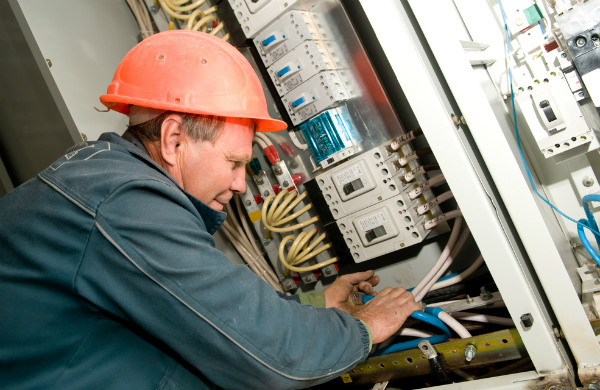Control Engineering Europe focuses on the increasing addition of artificial intelligence technology in machine control solutions, asking what benefits this will bring for the machine builder and the end user.
copyright by www.controlengeurope.com
 Traditional machine control technologies are based on the work of application-specific engineers. To tackle a certain task a control engineer would need to understand it in terms of physical requirements, work on a traditional physics-based solution for it and transfer the knowledge obtained into source code.
Traditional machine control technologies are based on the work of application-specific engineers. To tackle a certain task a control engineer would need to understand it in terms of physical requirements, work on a traditional physics-based solution for it and transfer the knowledge obtained into source code.
In an AI-based approach, the engineer will be more focused on data. The challenge to be solved is first described through data collection and then the engineer works with an abstract data-based representation of the physical problem. Therefore, the data engineer may not need to understand the physical details of a problem to generate a data-based solution for it.
“Some machine builders are already successfully integrating AI into their machines, said Fabian Bause, product manager TwinCAT at Beckhoff Automation. “Most are focused on AI-enhanced vision applications. Machine vision is a key application for AI because of the very powerful neural networks available for image recognition. In addition, successful networks are available in the AI community such as AlexNet, which can be shaped to suit similar applications by learning transfer. AI-based anomaly detection is also in use with some machine builders, because for training, this approach only requires data to describe the normal behaviour of a machine.”
Bause expects that the highest expected impact will be in applications such as AI-enhanced predictive maintenance, collaborative robots, enhanced productivity, quality control and process optimisation. “In terms of collaborative robots and process optimisation, machine builders will be able to solve certain tasks in a more precise, efficient and flexible way compared to classical approaches, he said. “Machine users will benefit from less downtime due to improved predictive maintenance, an increased production output because of prediction algorithms that can detect faulty processes and correct them early in time, and also benefit from robust and reliable end-of-line testing of the produced goods,” concluded Bause.
Different approaches
According to Tim Foreman, european R&D manager at Omron Industrial Automation, there are different approaches to the application of AI technologies in the production process: “Whether you take the wide analysis – like comparing factories or machines – or you take the deep analysis – like drilling down to the microsecond level to see what is really happening in your machine – a human can be very creative and is skilled enough to recognise images, but not at continuous microsecond speed or in data sets with ‘more than a few numbers’. It is in these situations that the machine can really add value and take our creativity to the next level,” said Foreman.
“Taking into account these challenges, Omron has focussed on the second area: how technology can extend human capabilities by drilling deep down into the machine. […]
read more – copyright by www.controlengeurope.com
Thank you for reading this post, don't forget to subscribe to our AI NAVIGATOR!


Control Engineering Europe focuses on the increasing addition of artificial intelligence technology in machine control solutions, asking what benefits this will bring for the machine builder and the end user.
copyright by www.controlengeurope.com
In an AI-based approach, the engineer will be more focused on data. The challenge to be solved is first described through data collection and then the engineer works with an abstract data-based representation of the physical problem. Therefore, the data engineer may not need to understand the physical details of a problem to generate a data-based solution for it.
“Some machine builders are already successfully integrating AI into their machines, said Fabian Bause, product manager TwinCAT at Beckhoff Automation. “Most are focused on AI-enhanced vision applications. Machine vision is a key application for AI because of the very powerful neural networks available for image recognition. In addition, successful networks are available in the AI community such as AlexNet, which can be shaped to suit similar applications by learning transfer. AI-based anomaly detection is also in use with some machine builders, because for training, this approach only requires data to describe the normal behaviour of a machine.”
Bause expects that the highest expected impact will be in applications such as AI-enhanced predictive maintenance, collaborative robots, enhanced productivity, quality control and process optimisation. “In terms of collaborative robots and process optimisation, machine builders will be able to solve certain tasks in a more precise, efficient and flexible way compared to classical approaches, he said. “Machine users will benefit from less downtime due to improved predictive maintenance, an increased production output because of prediction algorithms that can detect faulty processes and correct them early in time, and also benefit from robust and reliable end-of-line testing of the produced goods,” concluded Bause.
Different approaches
According to Tim Foreman, european R&D manager at Omron Industrial Automation, there are different approaches to the application of AI technologies in the production process: “Whether you take the wide analysis – like comparing factories or machines – or you take the deep analysis – like drilling down to the microsecond level to see what is really happening in your machine – a human can be very creative and is skilled enough to recognise images, but not at continuous microsecond speed or in data sets with ‘more than a few numbers’. It is in these situations that the machine can really add value and take our creativity to the next level,” said Foreman.
“Taking into account these challenges, Omron has focussed on the second area: how technology can extend human capabilities by drilling deep down into the machine. […]
read more – copyright by www.controlengeurope.com
Thank you for reading this post, don't forget to subscribe to our AI NAVIGATOR!
Share this: